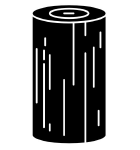Introduction to Fashion
Clothing can be made of materials from four main sources including animal (e.g. wool or silk), plant (e.g. cotton), mineral (e.g. glass fibre), and synthetic (e.g. nylon, polyester, acrylic). Today the primary materials used for fashion are either plant based (cotton) or synthetic (polyester).
SOURCE: Wikipedia
The life cycle of a t shirt – Angel Chang
Cotton and synthetic clothing in particular, widely used in the fashion industry, have a devastating environmental and social impact. As a result the fashion industry requires the most water input of any industry, involves the most pesticide-intensive crops in the world (cotton) and leads to water pollution and high CO2 emissions (around 3% of global production according to The Carbon Trust) as well as driving bad working conditions and low wages.
How transform textiles?

“Fashion Revolution is a global movement campaigning for a more accountable fashion industry, where dignity of toil and a safe environment are a standard and not an exception“.
Want to learn more from the EcoStep Project Interviews?
A recycled blanket made from textiles – EcoStep Design Competition entry

“Fashions have done more harm than revolutions“
-Victor Hugo-
By buying longer lasting clothes, reusing and upcycling, we can help tackle fast fashion and contribute to a better planet.









